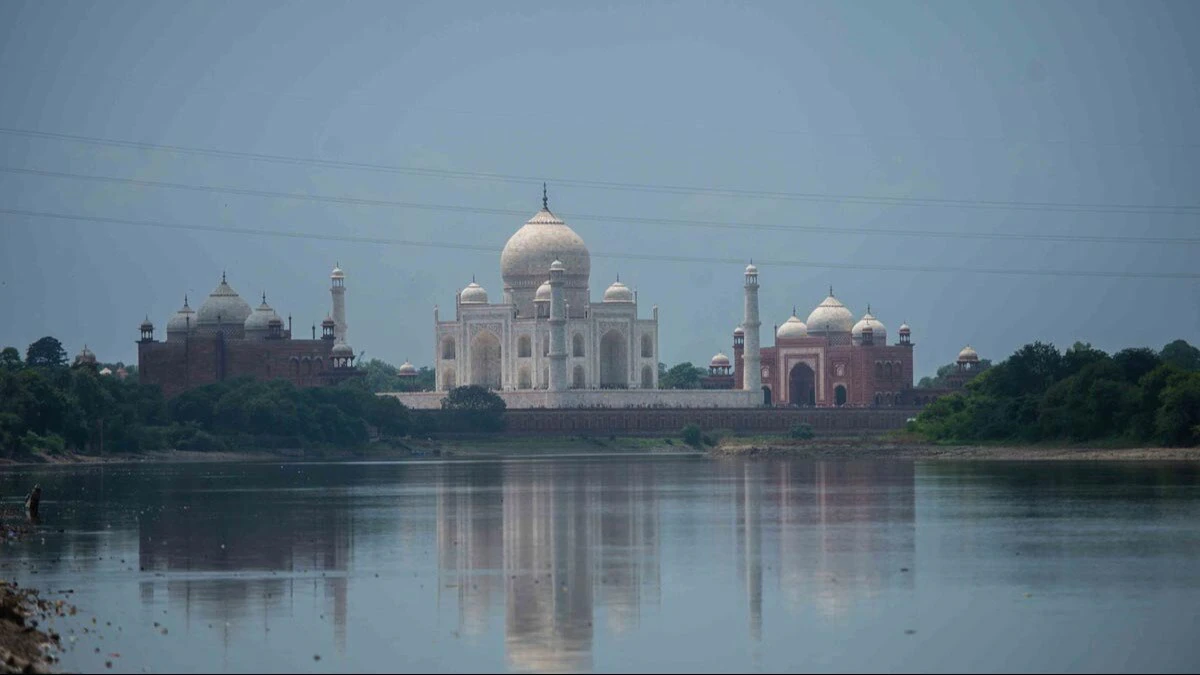Brij Khandelwal
Agra: Three decades after the Supreme Court intervention which led to a series of restrictions, the question still doing rounds is whether the 17th-century monument of love has finally been insulated from the hazards of environmental pollution. Green activists and conservationists in Agra feel the conditions remain much the same, with no drastic change in the air quality index of the city. The Taj Mahal, one of India’s most iconic and beloved monuments, is facing threats to its preservation. Eco-degradation, in the vicinity, urban congestion in neighboring areas, encroachments, and a general attitude of indifference are all taking a devastating toll on this cultural treasure.
Air pollution is a significant challenge, with nearby industries and traffic discoloring the monument’s pristine white marble facade. Stringent measures must be taken to reduce air pollution, including implementing stricter emission controls and promoting electric.
Three decades after the Supreme Court intervention which led to a series of restrictions, the question still doing rounds is whether the 17th century monument of love has finally been insulated from the hazards of environmental pollution.
Green activists and conservationists in Agra feel the conditions remain much the same, with no drastic change in the air quality index of the city.
The Taj Mahal, one of India’s most iconic and beloved monuments, is facing threats to its preservation. Eco-degradation, in the vicinity, urban congestion in neighbouring areas, encroachments, and a general attitude of indifference are all taking a devastating toll on this cultural treasure.
Air pollution is a significant challenge, with nearby industries and traffic discol vehicles.
The polluted Yamuna River, which flows adjacent to the Taj Mahal, poses a threat to the foundation of the monument. Collaborative efforts are necessary to clean up the river and prevent further degradation.
Human activities, including tourism, also pose a significant threat. With over seven million tourists visiting annually, measures such as limiting daily visitors, implementing timed entry tickets, and promoting off-peak visitation periods can help reduce human overload.
Sustainable tourism initiatives, such as guided tours focused on conservation and heritage preservation, can raise awareness among visitors about the importance of protecting the Taj Mahal.
Regular monitoring of the monument’s condition and utilizing advanced conservation techniques, such as laser cleaning and non-invasive repairs, are essential to detect signs of deterioration and restore the Taj Mahal to its original grandeur.
Collaborative efforts between government authorities, conservation organizations, and local communities are crucial in safeguarding the Taj Mahal’s heritage value for future generations. Implementing a comprehensive conservation management plan that addresses environmental, human, and structural threats is essential.
The legacy of the Taj Mahal is a reminder of our collective responsibility to protect and cherish our cultural heritage. We must adopt a holistic approach to conservation that balances preservation with the needs of visitors and the surrounding environment. Only then can we ensure that this timeless symbol of love continues to inspire awe and admiration for centuries to come.





